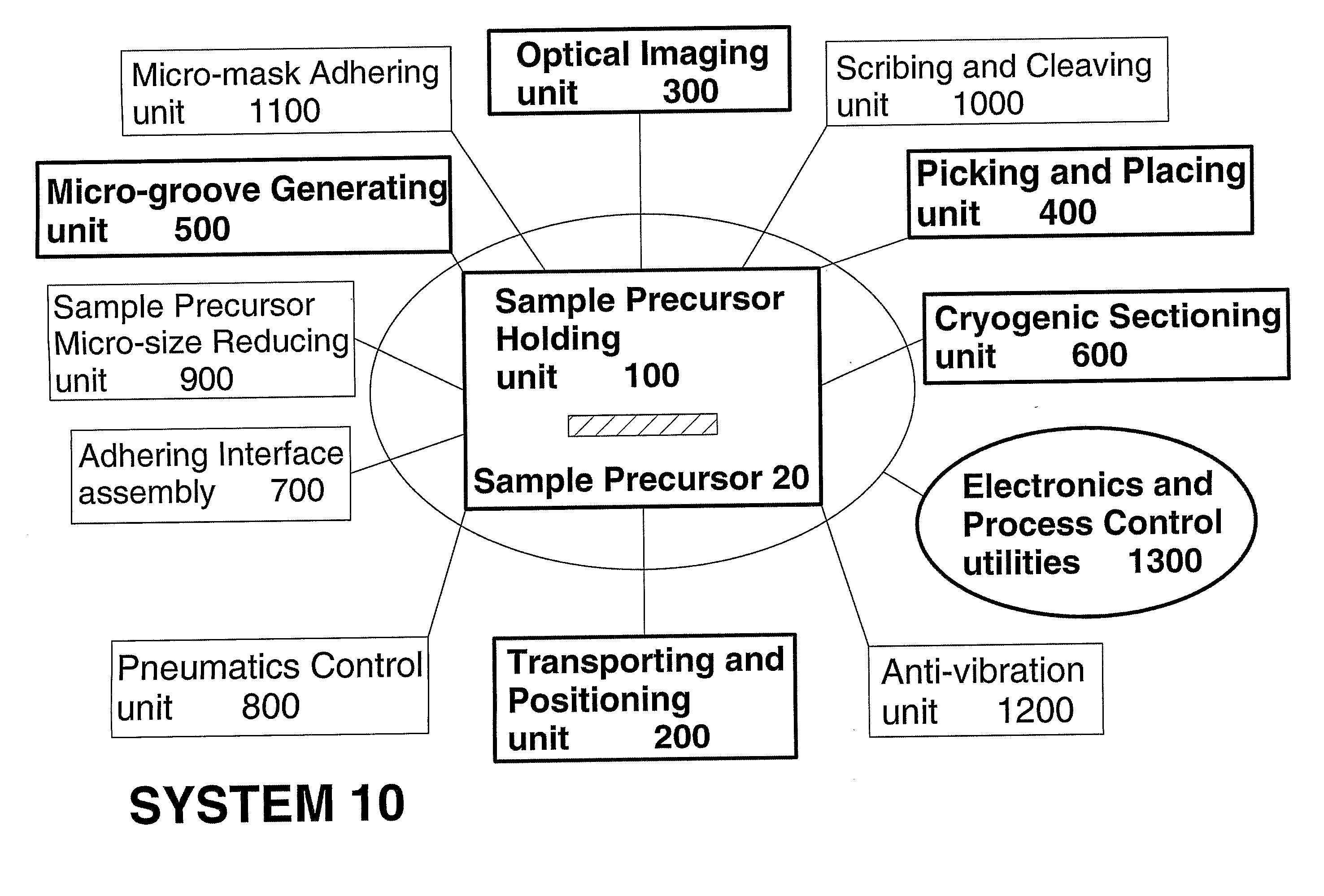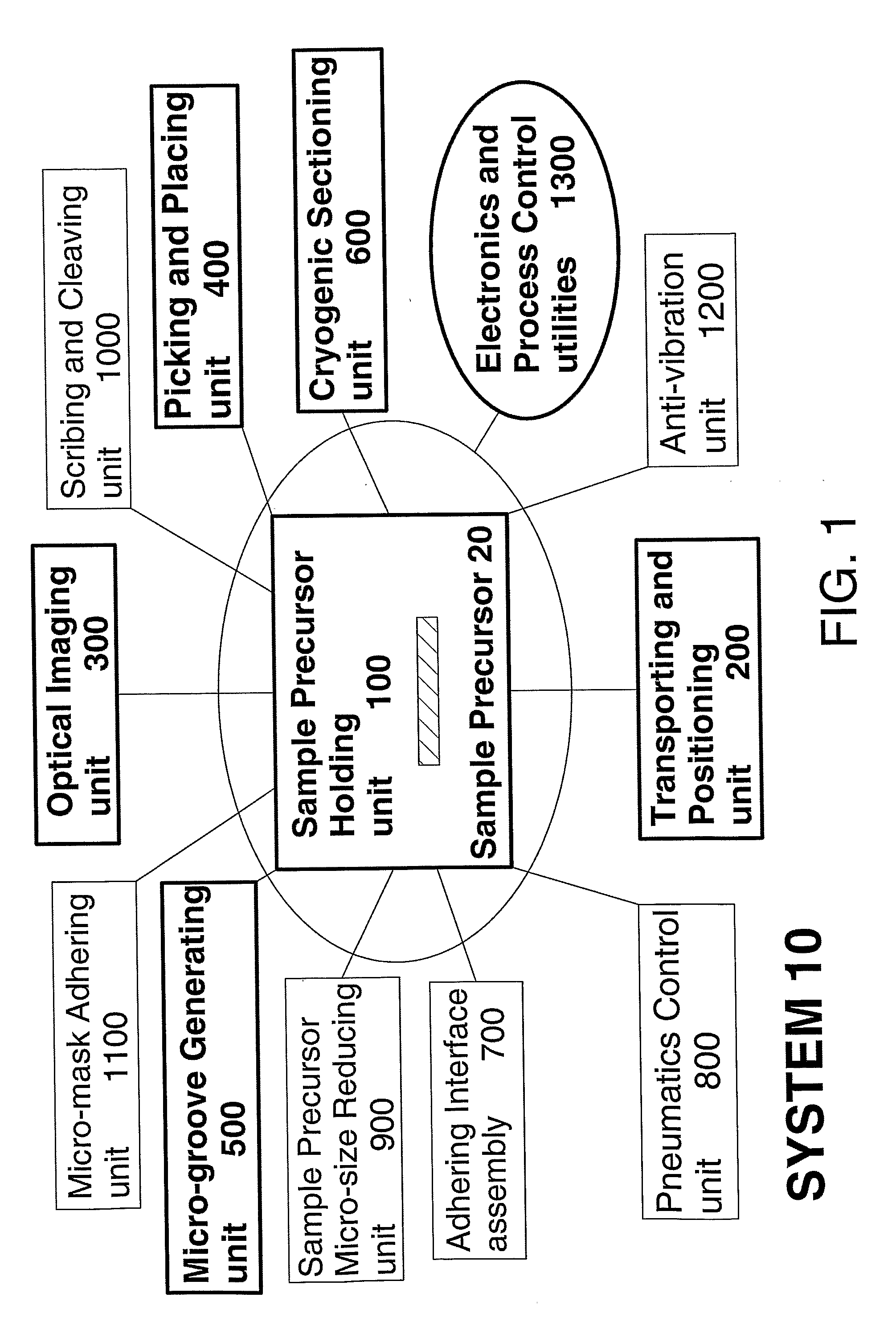Sample Preparation for Micro-Analysis
a micro-analysis and sample technology, applied in the field of sample preparation techniques and procedures, can solve the problems of sample features distortion, sample containing water-originating contaminants or artifacts, sample swelling, etc., and achieve the effect of reducing size (surface area dimensions) and preventing or minimizing the occurrence of vibration
- Summary
- Abstract
- Description
- Claims
- Application Information
AI Technical Summary
Benefits of technology
Problems solved by technology
Method used
Image
Examples
case 1
[0274] If the value of each surface area dimension, length and width, of the initially provided sample precursor 20 is in a first pre-determined range, for example, of less than a first pre-determined value (for example, about 3 mm), and larger than a second pre-determined value (for example, about 1 mm), then the initially provided sample precursor 20 is subjected to direct continuation of the method.
case 2
[0275] If the value of one or both surface area dimensions, length or / and width, of the initially provided sample precursor 20 is / are in a second pre-determined range, for example, of less than a third pre-determined value (for example, about 18 mm), and larger than the first pre-determined value (for example, about 3 mm), then the initially provided sample precursor 20 is subjected to a sample precursor size (surface area dimensions) reducing procedure, using the (preferably, automatic) sample precursor size (surface area dimensions) reducing unit 900, for reducing the value of the corresponding one or both surface area dimensions to be within the first pre-determined range (of case (1)), for forming the sample precursor 20 having a pre-determined size. Then the sample precursor 20 is subjected to continuation of the method.
case 3
[0276] If the value of one or both surface area dimensions, length or / and width, of the initially provided sample precursor 20 is / are equal to or larger than the third pre-determined value (of case (2)) (for example, about 18 mm), then the initially provided sample precursor 20 is first subjected to a macro-size optical inspection and marking, and is then subjected to a (manual) macro-size (surface area dimensions) reducing procedure, using optional sample precursor macro-size holding chuck 150 of sample precursor holding unit 100. Then, either Case 1 or Case 2 is performed.
[0277]Following sample precursor 20 being of an appropriate size, preferably, sample precursor 20 is manually mounted onto chuck base assembly 140, as shown in FIG. 3, via pneumatics control unit 800 (FIGS. 2 and 9A).
[0278]Step (a) includes loading of consumables or / and disposables, for example, sample precursor support structure 110 (side view) or 120 (planar view), or alternatively, the set of sample precursor ...
PUM
 Login to View More
Login to View More Abstract
Description
Claims
Application Information
 Login to View More
Login to View More - R&D
- Intellectual Property
- Life Sciences
- Materials
- Tech Scout
- Unparalleled Data Quality
- Higher Quality Content
- 60% Fewer Hallucinations
Browse by: Latest US Patents, China's latest patents, Technical Efficacy Thesaurus, Application Domain, Technology Topic, Popular Technical Reports.
© 2025 PatSnap. All rights reserved.Legal|Privacy policy|Modern Slavery Act Transparency Statement|Sitemap|About US| Contact US: help@patsnap.com



